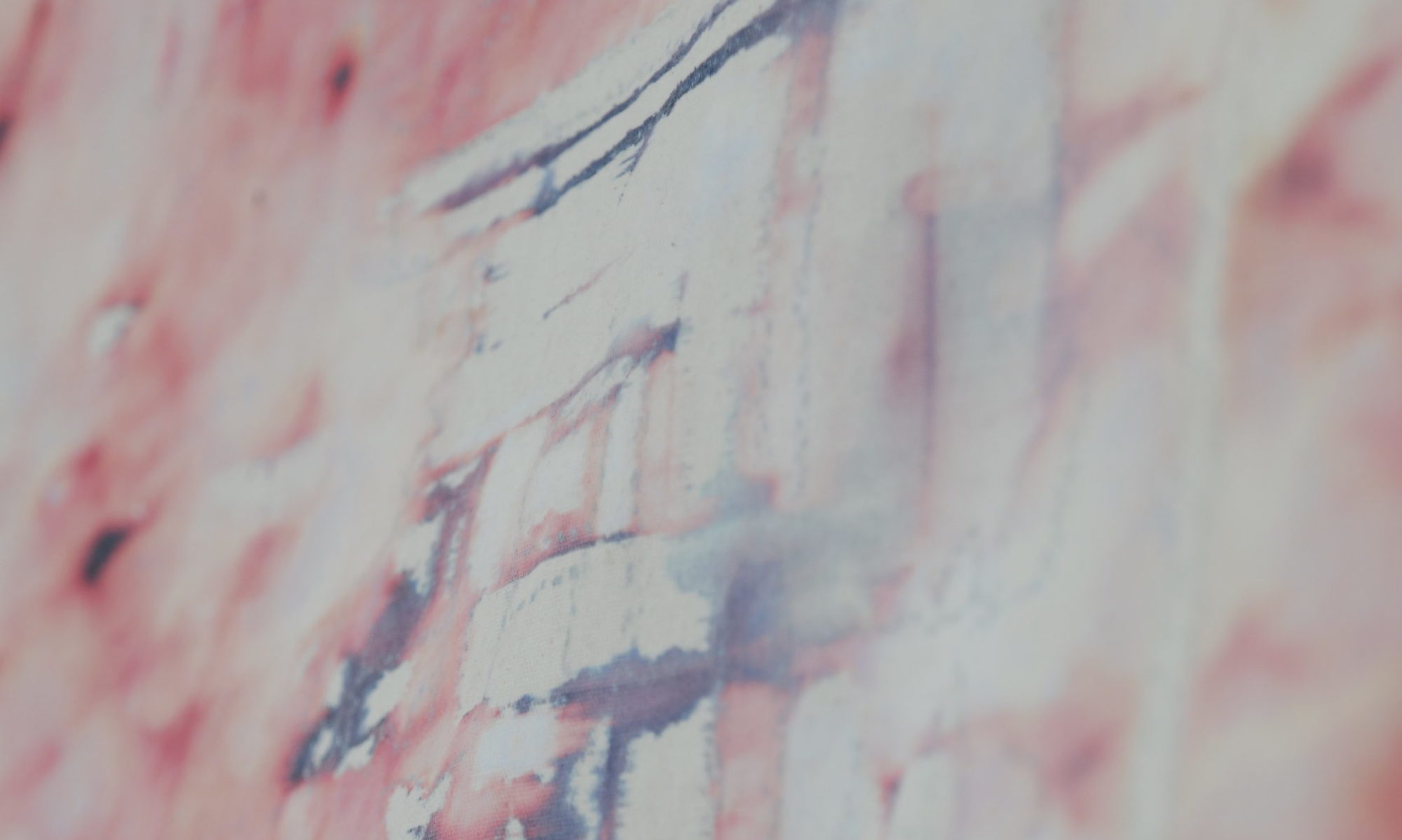Duhovi Upora, Widerstandsgeister, Spirits of Resistance is an exhibition and public program exploring memories of anti-fascist resistance, resilience, and the legacy of the Carinthian-Slovenian partisans through contemporary perspectives. The project reflects on the suppressed histories around the Peršmanhof Museum in Austria and opens a space to think about resistance across generations and geographies today. A collaborative, transnational Exhibition between Artists and Cultural Workers from Hamburg and the Museum Peršmanhof (AT).
With: Eda Aslan, Markus Gönitzer, Lennart Häusser, Zdravko Haderlap, Sophia Leitenmayer, Elsa Logar, Julia Stolba, Dana Rausch, Leonie Wahler, Stefan Wahler
Public Program, LECTURE PERFORMANCE: 28.04., 19:30 h, Literaturhaus Hamburg, Schwanenwik 38
Exhibition Opening, 30.04.25, 19.00 h, HyCP Veddel Space, Sieldeich 36 20539 Hamburg Artist Talk, 02.05.25, 18:00 h, HyCP Veddel Space
Mit freundlicher Unterstützung der Behörde für Kultur und Medien und des Bezirks Hamburg Mitte des Freundeskreises der HFBK Hamburg e.V., Muzej in spominski kraj pri Peršmanu – Museum und Gedenkstätte Peršmanhof Društvo/Verein Peršman
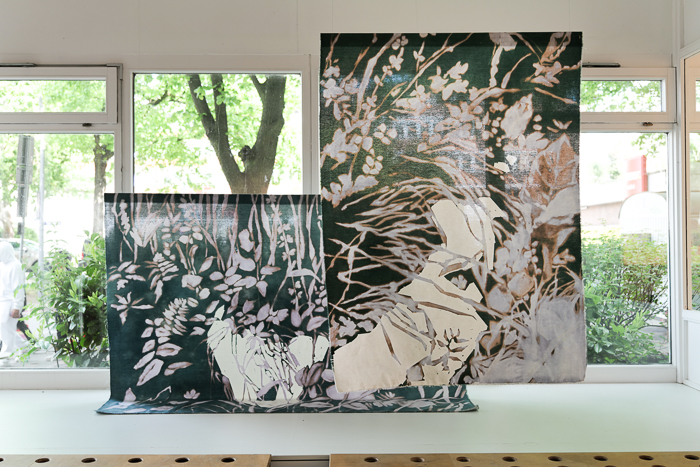
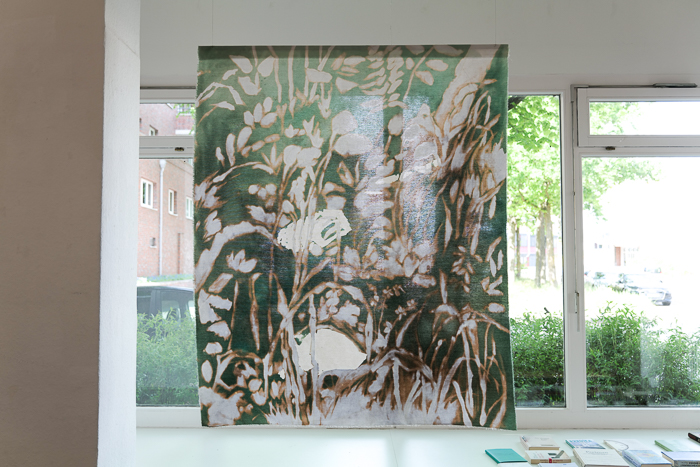
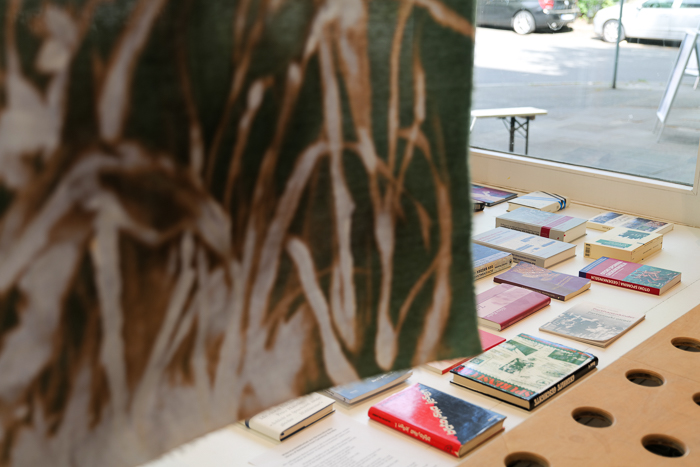
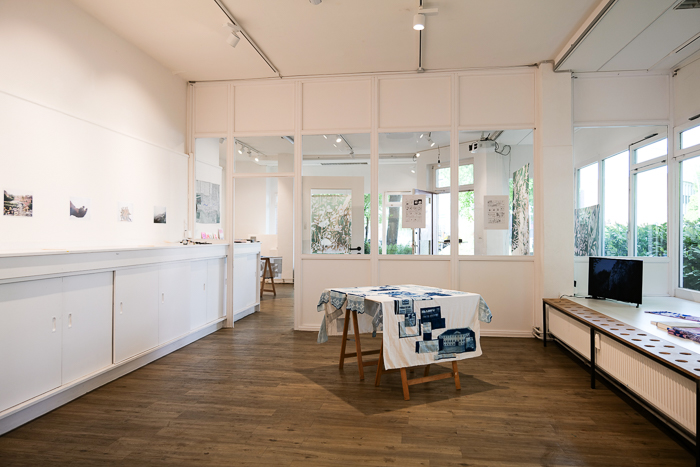
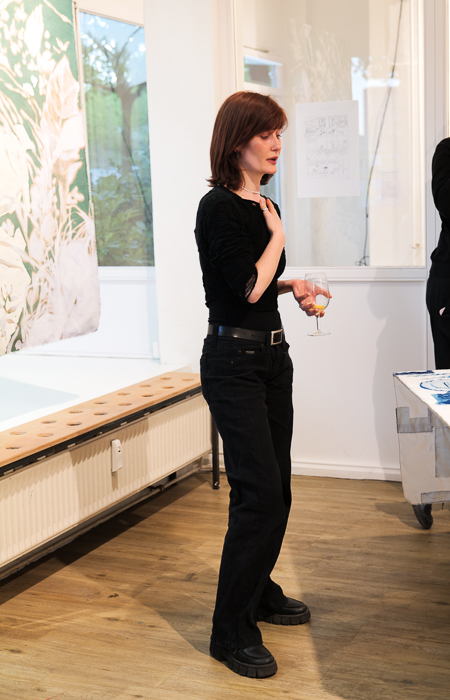
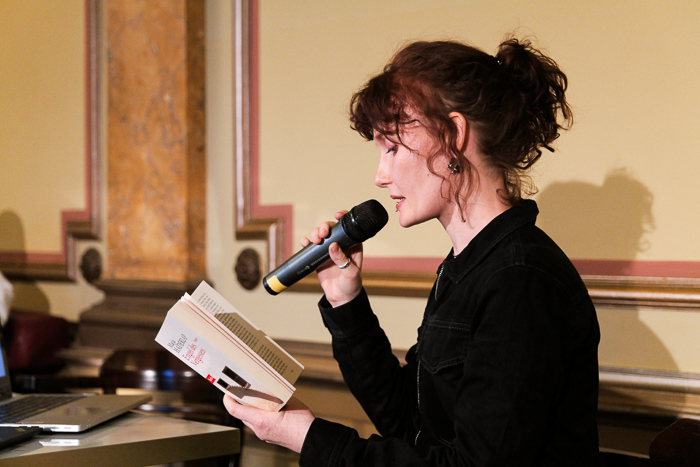
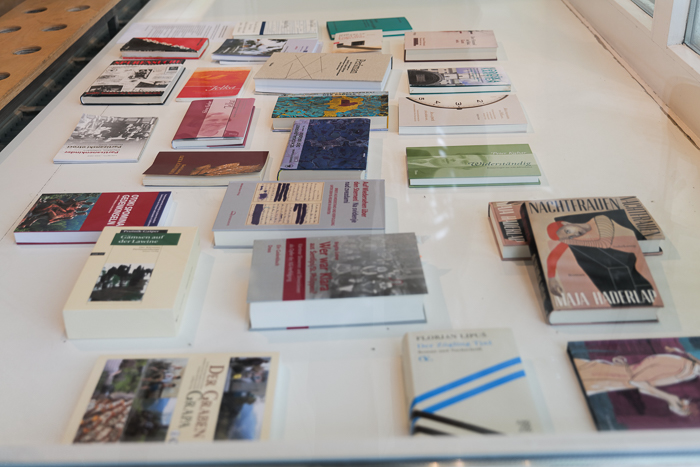
photo credits: Stefan Wahler
garden of rememberance, 2025
The painting installation deals with a place of the same name, near the Peršmanhof Museum, whose history is similar to that of the Peršmanhof and many farms in the area.
The Hojnik farm of the Polanšek family in Leppen/Lepena was burnt to the ground by the Nazis on 18 January 1944, some of its inhabitants shot on site, others deported to the Ravensbrück concentration camp and murdered there because the family supported the partisan resistance. Only a few survived. The perpetrators were never brought to justice.
A memorial stone erected by the Association of Carinthian Partisans in 1982 is located on a hiking trail near the former farm. There is hardly anything left to see of the farm itself. Hardly anything, but not nothing. Zdravko Haderlap and Markus Gönitzer, who organise the ‘literary hike’ in the area several times a year in the footsteps of the Carinthian partisan Jelka, stop where the Polanšek family once lived. Valentin Polanšek, author and educator, has created the ‘Garden of Remembrance’ at this site:
Surrounded by stones from the foundation walls of the farm, flowers grow there at all times of the year, surrounded by woods and rocks.
The three paintings depict the plants of the Garden of Remembrance that were growing there at the time of the Jelka hike in June 2023. The stones, silent witnesses of history that are barely visible among the plants, are the only ones left exposed.
Hydrogen peroxide was used in various mixing ratios for the bleaching process. This process (both the colouring with ink and the bleaching affects the entire fabric) makes it possible to view the paintings from both sides, so there is no front or back. They are hung in the room as an installation through which viewers can walk. The colouring and fading of the fabric reverses the usual painting process of applying pigments and thus adding them instead of removing them. In this way, the relationships between light and dark are also reversed, as in an inversion. Where the afterlife becomes denser, the pictures become lighter, right down to the traces, which then remain empty spaces.
The images also have an inherent physical afterlife. They change over the course of time and depending on the lighting conditions with which they are confronted. Faded areas become lighter and form bright yellow, fluorescent-looking edges.
Working through the motifs and the associated intensive examination of their history and contexts, as well as the resulting intensification of questions and demands on how to deal with them, unfolds a strong affective force in the process of painting, in the hope that it will also be transferred to those who see the pictures exhibited. The aim of the painterly practice is always to try to use painterly strategies to help actualise history, activate memory and thus create a shift in perception.
In memory of the Hojnik farm of the Polanšek family, whose story stands for so many that tell of persecution and resistance, the project of the Garden of Remembrance is the resistance that endures. Every month a plant grows in memory of the members of the family. Standing as resistant allies at the side of the partisans and at the side of those who support them.
